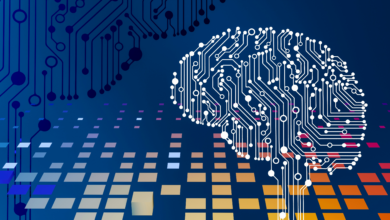
By Aaron Sandeen, VP of Technology Services at Crayon US
Artificial intelligence and cloud computing have become the engines of global transformation. No longer just innovative tools, they are foundational to how industries evolve, economies grow, and businesses operate. In 2025, their impact will be even more profound, with surveys revealing that over 90% of businesses plan to increase AI investments, and the cloud computing market is set to surpass $1 trillion globally. These figures underscore the accelerating dominance of these technologies and the influence they will have in shaping the future.
The Security Imperative for AI Adoption
The rapid adoption of AI across industries has brought new vulnerabilities. Employees often sidestep company-approved tools in favor of their own, creating fragmented systems prone to breaches. This has led to incidents like sensitive corporate data being unintentionally shared through public GenAI platforms—a costly mistake that businesses cannot afford.
In 2025, companies must make security foundational to their AI strategies. This involves implementing secure environments, adopting vetted tools, and building a culture of awareness. By addressing these risks head-on, businesses can safely unlock the transformative potential of GenAI without compromising sensitive information.
The Rise of GenAI Agents: From Tasks to Transformation
GenAI is evolving from answering basic questions to executing complex workflows. Early iterations of chatbots have given way to multi-functional agents capable of automating quality assurance, streamlining data modeling, and managing intricate business processes.
This evolution is redefining efficiency and opening new avenues for innovation. In 2025, these advanced GenAI agents will not just assist but lead strategic initiatives, empowering businesses to operate smarter and faster. Organizations that embrace these tools will find themselves at the forefront of their industries.
Redesigning Workflows with AI, AR, and VR
The integration of AI with augmented reality (AR) and virtual reality (VR) is changing how individuals and teams approach tasks. Traditional workflows—where tools are chosen for specific tasks—are being replaced by AI-driven conversational interfaces. These systems take user inputs and deliver tailored outputs, often enhanced with AR and VR capabilities.
This shift goes beyond technology; it’s about rethinking how work is conceptualized and executed. As more platforms and devices incorporate these technologies, individuals and organizations will adopt increasingly strategic approaches, streamlining workflows and improving productivity.
Cloud Computing as a Sustainability Catalyst
Cloud computing is becoming a linchpin in corporate sustainability strategies. With rising consumer demand for transparency and accountability, companies are leveraging the cloud to track, analyze, and report their environmental efforts.
Hyperscale cloud providers like AWS, Google Cloud, and Microsoft Azure are leading the charge by offering tools that make sustainability metrics accessible and actionable. In 2025, cloud computing will not only support operational efficiency but also serve as a critical enabler for achieving environmental goals. Companies aligning their strategies with these tools will gain both competitive and ethical advantages.
The Growing Challenge of AI Regulation and Case Law
The surge in AI-generated content has blurred the lines between authenticity and fabrication. From deepfake videos to fake reviews, distinguishing real from fake is becoming increasingly challenging. Recent rulings, such as the U.S. Federal Trade Commission’s ban on fake reviews and AI-generated content, are an essential step forward.
However, enforcement remains a challenge. High-profile cases, like NYT v. OpenAI, are setting precedents, but businesses and consumers alike must stay vigilant. Education and proactive regulation will be critical to navigating this new landscape.
AI Education: A Strategic Imperative
As AI becomes ubiquitous, education will determine who thrives in this new era. Teaching critical thinking, helping people spot AI-driven scams, and equipping everyone to leverage AI for innovation are essential.
And AI isn’t taking jobs; it’s transforming them. People who master AI tools to optimize costs, boost revenues, and improve well-being will become indispensable. Business leaders must also adapt quickly, understanding AI’s capabilities and limitations to guide their organizations effectively.
The AI-Cloud Synergy: A Vision for 2025
The intersection of AI and cloud computing is reshaping the future, enabling businesses to solve problems faster, scale efficiently, and innovate sustainably. From securing sensitive data to empowering people with smarter tools, these technologies are driving unprecedented transformation.
In 2025, the organizations that embrace AI and cloud will not only lead in their industries but also redefine what’s possible. While adopting new technology is a crucial first step, the future is about becoming fluent and using it strategically to create a lasting impact. The next era of innovation is here, and it’s powered by AI and the cloud.



